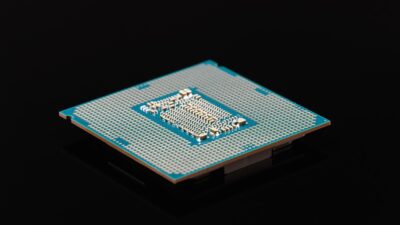In a world where digital experiences are becoming ever more immersive, the role of powerful graphics processing units (GPUs) has never been more crucial. Among the key players in this transformative landscape is NVIDIA’s GeForce line, which has set a benchmark for rendering high-fidelity graphics in virtual reality (VR) environments and beyond.
The Evolution of Virtual Reality
Virtual reality has evolved dramatically since its inception. What was once a concept confined to sci-fi novels and experimental laboratories has now become a widely accessible technology. With advancements in hardware, particularly in GPU technology, the once-ambiguous vision of VR is now an exhilarating reality. As headsets like the Oculus Rift, HTC Vive, and PlayStation VR continue to gain traction, the demand for high-performance computing capabilities has escalated.
The Power of GeForce
At the core of VR’s booming popularity is NVIDIA GeForce, which continually innovates to meet the increasing demands of immersive digital landscapes. Leveraging robust architectures and advanced rendering techniques, GeForce GPUs provide the necessary horsepower for real-time graphics. Here are some of the standout features of GeForce technology that enhance the VR experience:
1. Ray Tracing and Realism
Ray tracing alters the landscape of virtual realities by simulating realistic lighting, shadows, and reflections. With GeForce’s support for real-time ray tracing, developers can create visually stunning environments that feel alive and responsive. This technology not only elevates gaming but also has applications in fields such as architecture and training simulations, where accurate visualizations are crucial.
2. High Refresh Rates and Low Latency
In VR, immersion hinges on fluidity. A high refresh rate ensures that visuals are smooth and responsive, which is vital for preventing motion sickness and enhancing user experience. GeForce GPUs deliver high frame rates and reduce latency, providing users with seamless transitions and greater engagement in VR scenarios.
3. DLSS (Deep Learning Super Sampling)
One of the remarkable innovations from NVIDIA is its DLSS technology. This uses AI to upscale lower-resolution images in real time, allowing games to run at higher frame rates without sacrificing visual fidelity. In the context of VR, where maintaining high performance is imperative, DLSS proves invaluable, enabling richer and more expansive environments without overburdening the hardware.
4. VR-Ready Ecosystem
NVIDIA’s GeForce ensures compatibility across a broad range of VR headsets and platforms. This universal readiness enhances the accessibility of VR applications for both developers and consumers. The company’s commitment to a VR-friendly ecosystem means that users can enjoy fluid experiences irrespective of the device they choose.
Beyond Virtual Reality
While the primary focus has been on VR, the capabilities of GeForce extend well beyond this domain. With the rise of augmented reality (AR), mixed reality (MR), and advanced gaming environments, GeForce technology continues to adapt and provide high-quality graphics and performance.
1. Augmented Reality and Interactive Experiences
As AR technologies catch up with VR, GeForce’s rendering prowess plays a critical role. The blending of physical and digital spaces demands precise mapping and adaptive graphics presentation, tasks for which GeForce’s architecture is well-suited.
2. Gaming and E-Sports
The intersection of VR and competitive gaming is also an exciting frontier. GeForce not only enhances VR experiences but also contributes to competitive gaming by providing the speed and graphical fidelity required for immersive e-sports environments. As players seek the edge in performance, groundbreaking features like Reflex technology enhance responsiveness, making every millisecond count.
3. Professional Applications
Beyond entertainment, GeForce GPUs are increasingly utilized in various professional fields. Designers, architects, and engineers use these powerful tools for visualization and simulations. The ability to create interactive and compelling presentations has transformed workflows, enabling remote collaboration in an ever-connected world.
Conclusion
As the digital landscape continues to expand, the bridge between reality and virtual experiences is narrowing, thanks in large part to technologies developed by companies like NVIDIA. The GeForce lineup stands at the forefront, powering not just virtual realities but a multitude of applications that require high performance and stunning visuals.
From gaming and professional training to architecture and beyond, the potential of immersive experiences is limitless, and with GeForce leading the charge, one can only imagine what the future holds. Whether you’re an avid gamer, a budding developer, or a professional looking to enhance your work, the synergy of virtual reality and top-tier graphics technology promises a world of unprecedented experiences.

